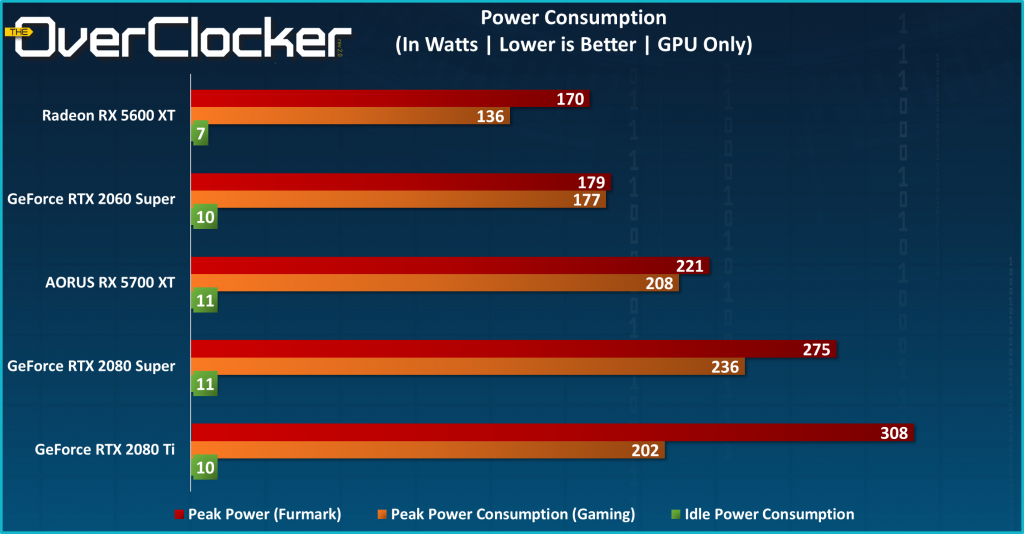AORUS RX 5700 XT 8G Review
GPU Power Consumption & Temperatures
As we can see below, the RX 5700 XT draws quite a bit more power as compared to the RTX 2060 Super. That said the difference is 42 Watts at the very most and all other times around 30 watts. Given the performance advantage the 5700 XT has, I’d say that’s more than acceptable. Thanks in part to the smaller GPU at 251mm^2 (7nm node from TSMC) vs the much larger 445mm^2 NVIDIA GPU made on the 12nm node. The RTX 2060 Super also houses roughly half a billion more transistors.

Power consumption for this level of performance is more than acceptable. Note the RX 5600 XT which is based on the very same Navi10 GPU draws even less power, but it’s performance relative to the power consumption isn’t as favorable. So the efficiency for the Navi10 GPU isn’t linear which is why the RX 5700 XT its the ASIC’s performance/power sweet spot whereas the RX 5600 XT misses it a bit.

Operating temperatures here are highly impressive, courtesy of the capable cooler and generally low heat output of the Navi10 GPU. While the 2080 Super temperatures appear better, this RTX 2080 Super was a partner card with a mighty big cooler, so it isn’t the founder’s edition model which would not be as cool. That said, these numbers are peak temperatures not sustained game temperatures, which are lower. Inside a case, and on average the game temperatures are in the high 50s to early 60s. Moreover, the AORUS cooler is whisper quiet.






